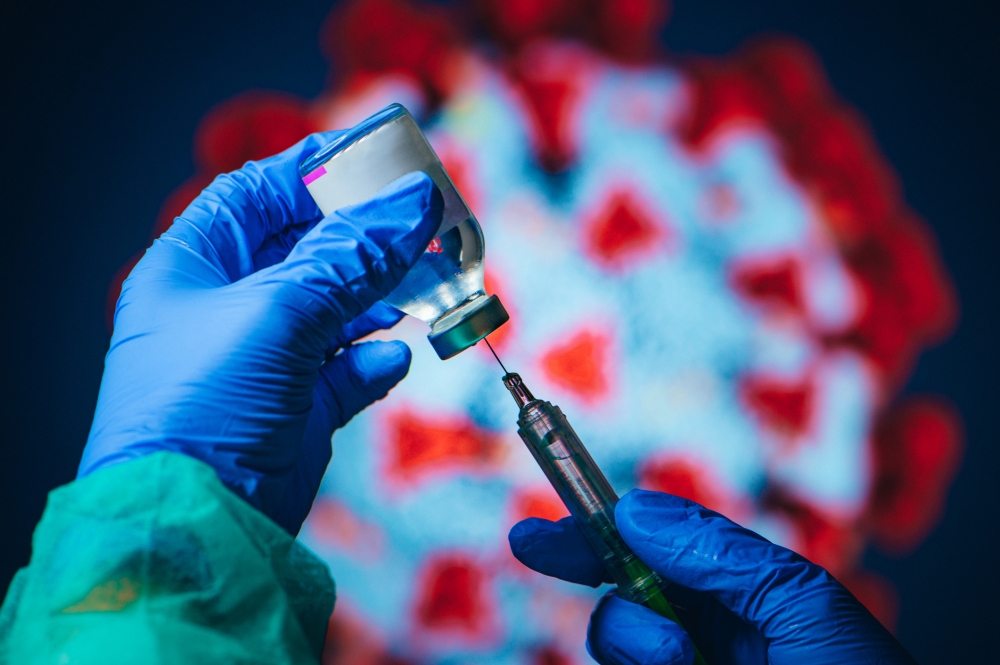
Rounding the Corner

The emergency use authorizations granted last month to Pfizer and Moderna for their COVID-19 vaccines by the Food and Drug Administration pave the way toward Santa Barbara County’s economic recovery, according to UC Santa Barbara economics professor Peter Rupert.
“The vaccines play a crucial role in getting our lives back together,” said Rupert, who is the director of the UCSB Economic Forecast Project. As in the rest of the country, the COVID-related lockdowns have wrought havoc on the local economy, straining local business and causing massive job loss.
That said, it will still take months and widespread cooperation to protect the community and get things back to normal, according to Van Do-Reynoso, Santa Barbara County Public Health Department director and Dr. Lynn Fitzgibbons, Cottage Health Systems’ infectious disease specialist, Rupert’s guests in the latest EFP Informs webinar. Both the Pfizer and Moderna vaccines are currently being distributed locally, initially to highest-risk frontline healthcare workers as part of the state’s “Tier 1” of the first phase of vaccine administration.
EFP Informs webinar, January 7, 2021
“We’ve received nuanced direction from the California Department of Public Health which is if we’ve done our due diligence in providing vaccines to Tier 1, that we can proceed on to Tier 2 and Tier 3,” Van Do-Reynoso said. Other healthcare workers, high-risk individuals and essential workers are next in line to receive vaccinations, with the rest of the community to be inoculated starting in late spring. (Updates on SBCPHD’s vaccination efforts can be found here, and general inquiries can be sent to vaccine@spcphd.org.)
Help can’t come soon enough. Now in its 10th month dealing with COVID-19, the local economy remains shaky, according to Rupert’s report. Jobless claims continue to be elevated and the county remains under stay-at-home orders as the number of cases skyrockets, pushing local hospitals to devote diminishing ICU space to acute coronavirus patients.
“That does not mean if we drop below 0% that the doors close, no one gets into the ICU or into the emergency room,” said Fitzgibbons. “What it really means is that beyond that capacity, we’re going to have to take care of patients with less staff, with less resources, possibly with less physical beds…and that’s what we’re starting to see.” Approximately 80% of the county’s ICU patients are being treated for COVID, she added.
Shooting the Messenger (RNA)
The new vaccines won’t help with the ongoing surge, but they could prevent future spikes.
“Vaccines are a way for the community to prepare to be well-protected. It is not protection at this very moment at a community level,” Fitzgibbons said, urging the audience to remain vigilant about keeping the spread under control.
Unlike conventional vaccines, which rely on a weakened form of the virus, those developed by Pfizer and Moderna rely on mRNA technology, which introduces genetic instructions into our cells to create certain proteins.
“The protein in this case is the virus’s protein, called the spike protein,” Fitzgibbons explained. Those spikes, which give the coronavirus its recognizable pin cushion-like appearance, are also how the virus attaches to its host and delivers its payload. The presence of those proteins will trigger our bodies’ immune response.
“We make antibodies, we make memory T cells and our immune system is basically primed to handle that spike protein if or when we ever bump into, inhale, or are otherwise exposed to that protein on the actual virus in the future,” she continued.
The vaccines appear to be effective against emerging variants, though they can be adjusted to new mutations in the spike protein as needed. They are 95% effective — what Fitzgibbons called “an incredible protection,” comparing it to the 50-60% effectiveness of the best flu vaccines.
Local and systemic reactions (swelling, pain, fever, headache) are mostly mild to moderate and short-lived. Very rare severe reactions (anaphylaxis) were not observed during clinical trials but have been observed outside of clinical trials, underscoring the need to perform these inoculations in facilities that can handle allergic reactions, Fitzgibbons said.
Vaccine recipients are given two doses, weeks apart, the second one to “train the immune system” to be on guard for the COVID-19 spike protein.
What remains to be seen as we round the corner on this pandemic is how long the protection will last, whether there will be any latent side effects, and how effective this version of the vaccine will be to emerging variants. Additionally, how much protection does it provide against asymptomatic infection, which is thought to be the source of almost half of all COVID infections?
“That’s a critical piece we still don’t know,” Fitzgibbons said, and one that will need to be examined before relaxing any mask- or social distancing public health measures.
Meanwhile, herd immunity remains a distant dream. To achieve this type of immunity, a significant fraction of the population must be protected — enough to put the brakes on any outbreak. The World Health Organization predicts that this won’t occur in 2021.
But, the vaccines are an encouraging start, the panelists said. With some effort and education, it’s possible begin on a path toward regaining economic footing, according to Rupert.
“We have to encourage everyone to understand that we all have a responsibility to end this viral war,” he said.



